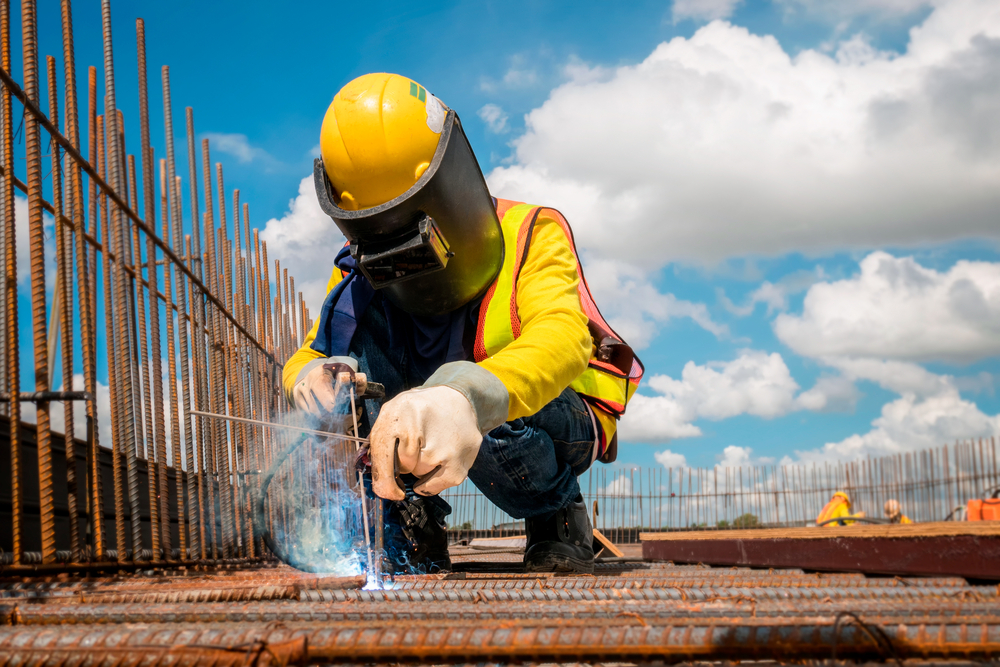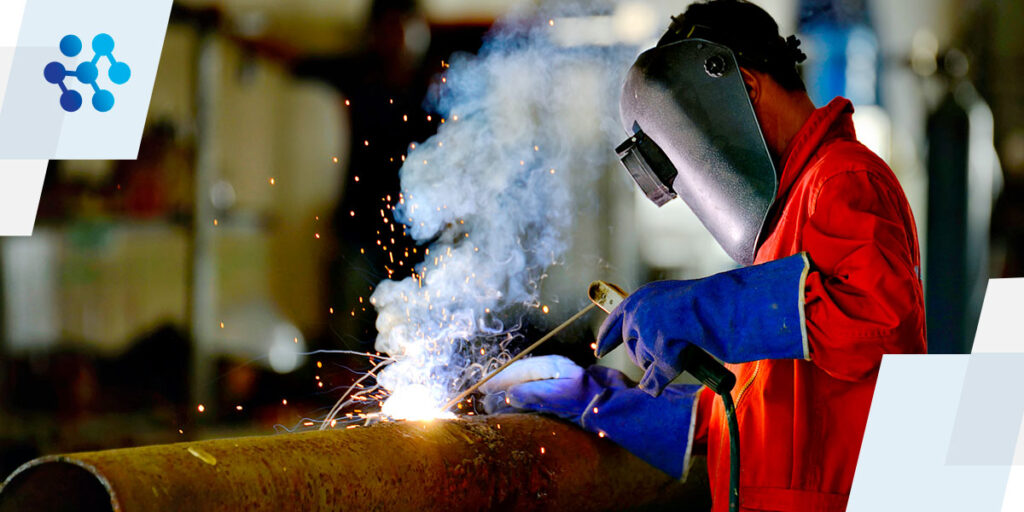Typical Welding Repair Work Issues and Just How to Address Them Properly
Welding repair work frequently run into a series of issues that can endanger the integrity of the end product. Typical issues include poor infiltration, porosity, and imbalance, among others. Each problem provides unique obstacles that need certain strategies for resolution. Recognizing these concerns is necessary for welders intending to improve their skills and results. This conversation will certainly discover these typical welding repair work concerns and efficient techniques to address them.
Inadequate Infiltration
Inadequate infiltration happens when the weld steel fails to totally fuse with the base material, causing weak joints and possible architectural failings. This problem often comes from insufficient heat input, incorrect electrode angle, or improper welding speed. Welders might come across poor infiltration as a result of a miscalculation of the essential parameters for a certain material thickness or type. In addition, contamination on the base material's surface can prevent reliable bonding, intensifying the issue. To attend to inadequate infiltration, welders ought to assure suitable settings on their devices and keep a clean work surface. Routine evaluation of welds is suggested to identify any type of deficiencies early, permitting prompt adjustments and the avoidance of jeopardized architectural honesty in bonded assemblies.
Porosity
Porosity is a typical issue in welded joints that manifests as little gas bubbles entraped within the weld steel. This issue can compromise the honesty of the weld, bring about reduced stamina and prospective failing under stress. Montana Mobile Welding and Repair. Porosity typically occurs from contamination, wetness, or incorrect welding techniques, which permit gases to get away into the molten weld swimming pool. To resolve porosity, welders should guarantee appropriate surface prep work, keep a tidy workplace, and make use of suitable welding parameters. Additionally, selecting the best filler material and shielding gas can reduce gas entrapment. Routine examination and screening of welds can aid identify porosity early, guaranteeing prompt restorative activities are taken, thus protecting the high quality and reliability of the welded framework
Misalignment
Imbalance in welding can emerge from different factors, consisting of inappropriate arrangement and thermal growth. Understanding the source is important for effective resolution. Numerous improvement methods are available to straighten elements and guarantee architectural stability.
Causes of Imbalance
Welding misalignment typically stems from a selection of underlying problems that can compromise architectural integrity. One key cause is incorrect fit-up of components before welding, which can cause gaps and uneven surfaces. Variants in thermal development during the welding process can also result in distortion, specifically if the products being joined have different coefficients of development. Additionally, poor fixturing and clamping might fail to hold elements securely in place, bring about movement throughout welding. Poorly conserved devices, consisting of welding makers and devices, may introduce variances in the weld grain, more adding to misalignment. Ultimately, operator error, coming from insufficient training or experience, can additionally play a significant function in producing misaligned welds.
Correction Strategies Readily Available
Addressing misalignment efficiently needs a mix of rehabilitative methods customized to the specific issues available. One typical technique is making use of jigs or fixtures to hold components in the proper position throughout welding, making certain consistent alignment. In addition, preheating the products can aid lower distortion and enhance fit-up. For substantial imbalance, mechanical adjustment techniques, such as using hydraulic jacks or clamps, can be used to fix the position prior to welding. Post-weld heat therapy may additionally be essential to ease tensions brought on by imbalance. Careful assessment and change throughout the arrangement stage can avoid imbalance issues from ending up being substantial problems, advertising a smoother welding procedure and boosting general structural honesty.
Distortion
Distortion is a common obstacle in welding that can emerge from various factors, including uneven cooling and heating. Comprehending the sources of distortion is essential for carrying out efficient avoidance techniques. Resolving this concern not only boosts architectural integrity yet likewise improves the overall high quality of the weld.
Reasons for Distortion
When based on the intense warm of welding, products typically undergo adjustments that can bring about distortion. This sensation mostly occurs from thermal growth and contraction during the welding procedure. As the weld location warms up, the material broadens; upon cooling, it acquires, which can develop interior stresses. On top of that, uneven heating across a workpiece can intensify these stress and anxieties, causing warping or bending. The type of material likewise plays a substantial function; metals with differing thermal conductivity and coefficients of development might react differently, resulting in uncertain distortions. Inadequate joint layout and insufficient fixturing can contribute to misalignment during welding, increasing the chance important site of distortion. Recognizing these causes is crucial for reliable welding repair service and prevention techniques.
Prevention Techniques
Reliable prevention techniques for distortion throughout welding concentrate on controlling warmth input and ensuring correct joint design. Keeping a constant warm input aids to reduce thermal development and tightening, which can lead to distortion. Making use of methods such as pre-heating the workpiece can additionally decrease the temperature level gradient, promoting consistent heating. In addition, selecting appropriate joint styles, such as T-joints or lap joints, can boost stability and decrease stress and anxiety concentrations. Executing correct fixturing to secure the workpieces in position further help in keeping positioning during the welding process. Ultimately, staggered welding sequences can mig welding stainless steel with argon distribute warm extra equally, preventing local distortion. By using these techniques, welders can substantially decrease the possibility of distortion and boost the overall quality of their welds.
Cracking
Breaking is a typical concern experienced in welding repair work, often resulting from different elements such as inappropriate cooling prices, material choice, or poor joint preparation. The occurrence of cracks can considerably jeopardize the stability of the weld, leading to prospective failings during procedure. To resolve this problem, welders should first analyze the root creates, guaranteeing that materials are compatible and properly selected for the particular application. Furthermore, managing the cooling rate during the welding process is essential; rapid air conditioning can generate anxiety and bring about fracturing. Correct joint style and prep work also contribute to minimizing the risk. Executing these techniques can boost weld top quality and durability, inevitably decreasing the possibility of fracturing in completed weldments.

Insufficient Fusion
A substantial problem in welding fixings is incomplete blend, which occurs when the weld metal does not properly bond with the base product or previous weld passes - Montana Mobile Welding and Repair Welding. This issue can result in weaknesses in the joint, potentially endangering the integrity of the welded framework. Aspects adding to insufficient blend consist of insufficient warmth input, improper welding method, and contamination of the surface areas being signed up with. To resolve this issue effectively, welders ought to ensure appropriate pre-weld cleansing and surface area prep work, along with adjust their welding parameters to attain ample penetration and combination. Routine assessment throughout the welding process can additionally assist determine insufficient blend early, enabling for prompt rehabilitative steps to enhance the general high quality of the weld
Overheating
While welding repair services can boost architectural integrity, overheating offers a considerable difficulty that can lead to material degradation. Excessive heat during welding can alter the mechanical residential properties of metals, leading to decreased strength, raised brittleness, and bending. This phenomenon is especially crucial in high-stress applications where architectural integrity is vital. Determining getting too hot can entail aesthetic examinations for staining or distortion, in addition to keeping an eye on temperature level during the welding process. To minimize the dangers connected with overheating, welders must employ appropriate strategies, such as managing heat input, readjusting traveling speed, and utilizing appropriate filler materials. Furthermore, executing pre- and post-weld warm therapies can assist bring back product homes and boost the general top quality of the fixing, making sure long-term efficiency and safety and security.
Often Asked Inquiries
What Are the Common Indicators of a Welding Defect?

How Can I Evaluate My Welds for High quality?
To check welds for top quality, one can use aesthetic examinations, ultrasonic screening, and radiographic methods. Each technique ensures structural integrity, identifies defects, and validates adherence to defined criteria, eventually enhancing the reliability of the bonded joints.
What Safety and security Preventative Measures Should I Take While Welding?
When welding, one must prioritize security by wearing appropriate individual protective equipment, ensuring proper air flow, safeguarding combustible materials away, preserving a clean workspace, and being aware of environments to stop crashes and injuries.
Can I Fix a Weld Without Renovating the Entire Joint?
Repairing a weld without redesigning the entire joint is feasible, relying on the damages (Belgrade). Techniques such as grinding, including filler product, or utilizing a welding process can efficiently attend to details flaws while protecting the bordering framework
What Equipment Are Vital for Reliable Welding Fixes?
Important tools for efficient welding repair work consist of a welding device, cable brush, grinder, safety gear, clamps, and filler materials. Each device plays a vital duty in ensuring quality and security during the repair process. Porosity commonly develops from contamination, dampness, or incorrect welding methods, which permit gases to run away into the molten weld pool. Improperly conserved devices, including welding devices and devices, may present incongruities in the weld bead, further contributing to imbalance. When subjected to the intense warmth of welding, products usually undertake adjustments that can lead to distortion. Fracturing is an usual problem run into in welding repairs, frequently resulting from numerous elements such as inappropriate air conditioning rates, material selection, or inadequate joint prep work. A considerable problem in welding repairs is insufficient blend, which happens when the weld steel does not sufficiently bond with the base product or previous weld passes.